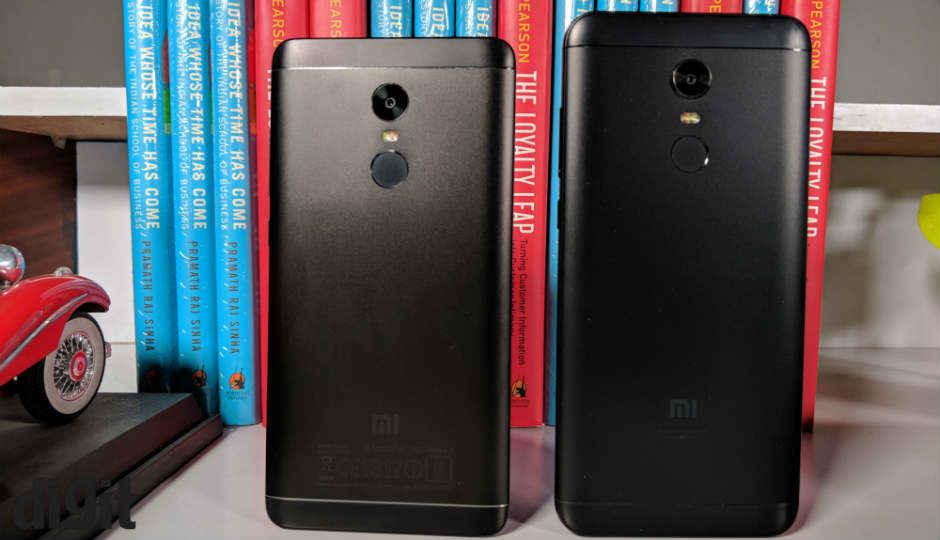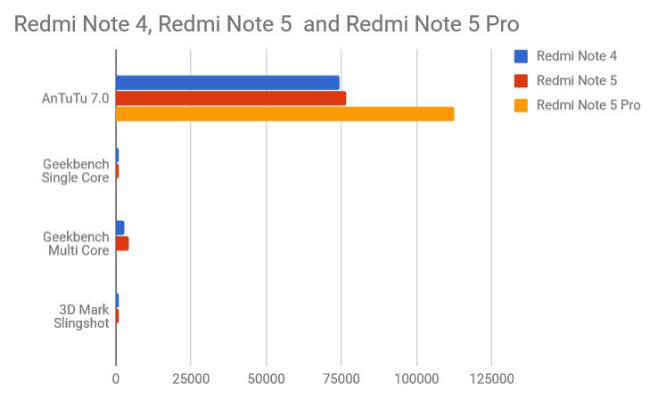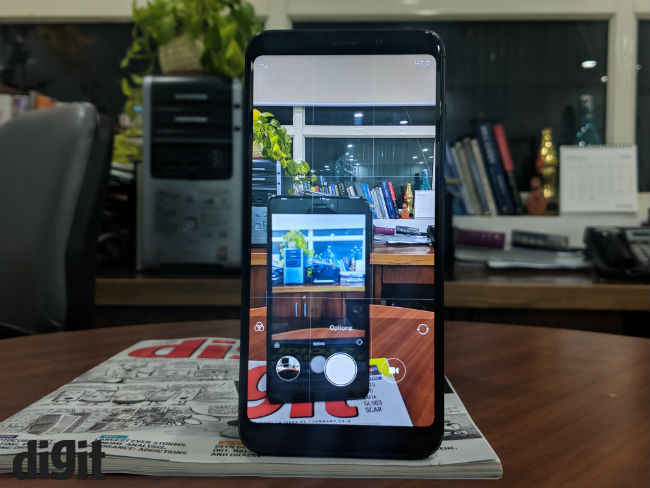Xiaomi Redmi Note 5 vs Redmi Note 4: What’s changed?
The new Xiaomi Redmi Note 5 siblings are on the prowl to claim the crown of the Budget King, from the Redmi Note 4. But are they worth the title? More importantly, are they worth your money?

After almost a year of launching the tremendously successful Redmi Note 4, which eventually went on to sell more than 9.6 million units, Xiaomi announced not one, but two successors to last year’s budget king — The Redmi Note 5 Pro (review) and the Redmi Note 5 (review). They come well-dressed with the taller 18:9 display and the Redmi Note 5 Pro even goes as far as looking a lot like the iPhone X. But facial changes apart, is it really an upgrade from last year’s Redmi Note 4?
 Survey
SurveyYes. And no. Well, the Redmi Note 5 Pro is quite an upgrade, but I can’t say the same about the Redmi Note 5. Xiaomi, much like the Cupertino giant it likes to be inspired from, held back on the significant upgrades that were expected from the Redmi Note 4 successor. That’s makes the Redmi Note 5 Pro the spiritual successor of the best budget phone of 2017.
Now, we’re saying a lot of good things about the two new phones, but are they really good enough to beat their predecessor? More importantly, if you own a Redmi Note 4, does it make sense to buy them? We find out.
Display
One of the main facial upgrades the two phones received over the Redmi Note 4 is the display. Both the Redmi Note 5 and the Redmi Note 5 Pro sports the taller 5.99-inch 18:9 display that’s in vogue right now. And with the new display in your hand, all phones launched in the past look somewhat clunky and that goes the same for the Redmi Note 4 as well.
The new panels on the Redmi Note 5 and the Redmi Note 5 Pro is brighter, sharper and has more screen real estate for better multi-tasking and watching content. It does make the phone a little taller than its predecessor, but thanks to the lesser width and the sleek body, the Redmi Note 5 feels more ergonomic.
There’s more to the upgrade though. When we reviewed the Redmi Note 4 last year, we noted that the phone’s sunlight legibility was sub-optimal. That has changed this time as the Redmi Note 5 and the Redmi Note 5 Pro got a maximum luminescence rating of 570 and 620 nits respectively. It’s still a glossy display but the extra brightness does the trick. It also makes content on the screen look more vivid, but at peak brightness you will likely lose out on a few details.
Overall, the panels on the two new phones are still quite warm, with deeper contrasts and darker blacks. That has become a Xiaomi standard and it was the same on the Redmi Note 4 as well. Some things never change.
Design
Because of the display, and only because of the display, there is a change in the design in the Redmi Note 5 over the Redmi Note 4. The Redmi Note 5 Pro has some more changes in the fascia, but not in the good way, in my opinion. The taller display now takes up most of the real estate on the front. Unlike the Redmi Note 4, there are no physical capacitive buttons to accommodate the extra screen real estate.
However, the Redmi Note 5, looks distinctly identical to the Redmi Note 4 from the back. Right from the camera placement, to the fingerprint sensor down to the faded Xiaomi logo. Ditto. It’s slightly slimmer and there’s a rather ugly camera bump on the Note 5.
The Note 5 Pro, on the other hand, has become uglier somewhat. It attempts to ape a certain phone that retails for above a lakh, but the finishing (obviously) is not the same. The phone features a vertically aligned dual camera stack on the top left corner, much like the iPhone X, with the LED flash module in between the two lenses. It also has a huge camera bump and looks quite ugly.
Going purely by the design, the Redmi Note 4 looked much better during its time with the symmetrical alignment of the elements on the phone and the minimalist finish.
Performance
While the Redmi Note 5 runs on the same hardware as its predecessor, the Redmi Note 5 Pro is a whole new beast. The performance of the smaller Redmi Note 5 is pretty much the same as the Redmi Note 4 as both are powered by the same Snapdragon 625 processor coupled with 4GB of RAM. That’s not really a bad thing, per se, but there’s no big leap in performance. The benchmark scores for both of them are pretty much similar with the new Redmi Note 5 edging the Note 4 out slightly thanks to better optimisations under the hood.
The Redmi Note 5 Pro is a totally different story. It’s the first phone in the world to be powered by the Snapdragon 636 that relies on custom Kryo 260 cores clocked at 1.8GHz for better performance and energy efficiency. They’re the same cores used in the flagship-grade 8-series chipsets by Qualcomm. There’s a 40 percent boost in performance over the previous Snapdragon 630 (which powers the more expensive Moto X4) and you can actually see the performance boost in your day-to-day usage. Right from app loading times, to playing games, browsing social media to taking photos, everything is faster than the current crop of mid-range phones.
Both the new phones have better thermals as well. The Snapdragon 625 on the Note 5 and the Snapdragon 636 on the Note 5 Pro are both thermally optimised chipsets. Add to that a layer of graphite sheet and the phones hardly become warmer, even under heavy duress.
Despite using the same internals, the Redmi Note 5 is faster than the Redmi Note 4 (but only by a hairline, chances are, you won’t notice the difference in your daily usage). Coupled with 6GB of RAM, the Redmi Note 5 Pro is currently the fastest and the most powerful mid-ranger out there.
Camera
The Redmi Note 5 and the Note 5 Pro are great camera phones for the price they come for, but so was the Redmi Note 4, back during its time. Over time, Xiaomi’s own Mi A1 as well as the Moto G5 Plus and Honor 7X trumped the old budget king, but it’s now time for Xiaomi to snatch back that crown.
The Redmi Note 5 Pro is the first Redmi series phone in India to get the dual camera stack at the back. It uses the secondary 5-megapixel sensor to capture depth information while the primary 12-megapixel camera features a larger 1.25um pixel size and f/2.2 aperture. The larger pixel size absorbs more light and results in better details, deeper contrasts.
The Redmi Note 5, on the other hand, only has the primary lens of its elder sibling — The 12-megapixel snapper with 1.25um pixel sensor. This too is much more than the Note 4 in terms of imaging prowess. It has better detail reproduction and optimises highlights and shadows well enough.
Both phones have highly sensitive sensors however, and that makes the performance inconsistent. The limits of the Redmi Note 4 was pretty apparent, and it would perform consistently well within its limits. The new phones, for the most part, take photos that are outright stunning, but some times the results are sub-par.
We'll update this section with image samples later.
Battery
The primary reason why the Redmi Note 4 sold like hot cakes is because of its astonishingly long battery life. The 4,000mAh battery in the Redmi Note 4 lasted over a day and then some more. And the Redmi Note 5 and the Note 5 Pro has continued that legacy of having stellar battery life.
We played Injustice 2 for two hours straight on the Redmi Note 5 Pro and the battery discharge was only 20 percent. The improvement in battery life on the Redmi Note 5 Pro can be attributed to the newer, more efficient processor which allows the phone to consume less power.
I used the Redmi Note 5 as my daily driver for a week, and after every work day, I was left with around 40 percent charge. That’s a lot! Even though the phone uses the same internals, it’s more power-efficient than its predecessor. That’s despite the taller display. And from what I’m guessing, that’s primarily because of the optimisations MIUI 9 comes with, including a newer file storage sytem and real-time defragmentation.
Software
Xiaomi has been kind enough to update most of its older devices to the latest MIUI 9, which is the software the powers Xiaomi’s devices (except the Mi A1 of course) and that means experience wise, there’s no difference in the Redmi Note 5 and the Redmi Note 5 Pro from their predecessor. All the three phones comes with all the features that MIUI 9 boasts of, including the bump in performance and nifty features like notifications management, dual-instance, and more.
However, none of the phones are on the latest Android 8.0 Oreo. MIUI 9 is based on Android 7.1.2 Nougat, which is now more than a year old. If you are looking for a phone with the latest Android, these are not the one for you.
Having said that, Xiaomi’s MIUI, if you develop a taste for it, is one of the most fluid custom interfaces on an Android device. It’s fast and snappy and hardly lags, even when there’s less free RAM available.
Bottomline
TL,DR, both the new phones are faster than the Redmi Note 4. The Redmi Note 5 being slightly faster while the Redmi Note 5 Pro blows the competition away. It’s quite expected as these are evolutionary upgrades and they’re bound to be faster. Having said that, the fact that the Redmi Note 5 uses the same hardware as the Note 4 is disappointing. But it’s impressive to see Xiaomi tune the same Snapdragon 625 to perform better on this one.
The Redmi Note 5 Pro is a whole different beast and thanks to its new chipset, it is the fastest phone in the mid-range segment and while it does retain some of the DNA of the Redmi Note 4, comparing it with its predecessor is almost an insult to the phone.If you are upgrading from an older Redmi Note 4, there's no point buying the Redmi Note 5. The Redmi Note 5 Pro is pretty obviously the better and more justifiable upgrade.Click here to buy.





